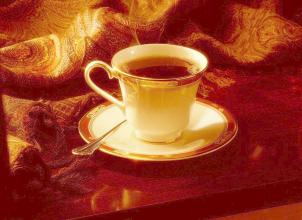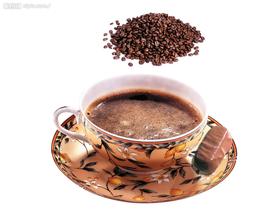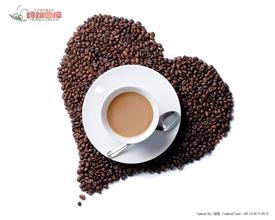Video course on Coffee Powder manipulation-Coffee Heart-shaped manipulation Video
Video course on Coffee Powder manipulation-Coffee Heart-shaped manipulation Video
Drip filter coffee
The method of cooking invented by the Germans. To put it simply, after grinding the coffee, put it in a funnel or add a layer of filter paper and pour hot water on top (the ideal water temperature is between 90C and 95C). Due to the gravity of the earth, the coffee will flow out from below. The amount of coffee is usually 7 to 10 grams of powder can make about a cup of 120ml.
Siphon pot (Syphon)
One of the most popular ways to brew coffee in cafes. Principle: under the burning of alcohol lamp, when the water temperature in the lower container reaches 92 ℃, the water is sucked into the upper container with coffee powder, and after soaking and stirring, the coffee is returned.
Degree of grinding: slightly thicker than powder, close to special fine granulated sugar.
Siphon cooking has the feel of a chemical laboratory. Some people say that because it can extract the most perfect part of coffee.
Mocha pot (Moka Pot)
The basic principle of mocha pot is to use pressurized hot water to quickly extract coffee liquid through coffee powder. The earliest mocha pot was made by Italian Alfonso Bialetti in 1933, and his company, Bialetti, has always been famous for producing this kind of coffee pot. Mocha coffee pots are commonly used in Europe.
The mocha pot is divided into two parts: the water is put in the lower part to boil and boil to produce vapor pressure; the boiling water rises and passes through the filter pot containing coffee powder; when the coffee flows to the upper half, turn down the fire, if the temperature is too high, the coffee will smell scorched.
The cultivation and production of coffee in the 17th century has always been monopolized by Arabs. At that time, it was mainly used in medicine and religion, and doctors and monks admitted that coffee had the effects of refreshing, awakening, strengthening the stomach, strengthening the body and stopping bleeding. The use of coffee was documented at the beginning of the 15th century and was integrated into religious ceremonies during this period. At the same time, it also appeared in the folk as a daily drink. Because drinking was strictly prohibited in Islam, coffee became a very important social drink at that time. At first, coffee was expensive in Europe. Only aristocrats could drink coffee, and coffee was even called "black gold". Until 1690, a Dutch captain sailed to Yemen and got some coffee seedlings, which were successfully planted in Indonesia. In 1727, the wife of a diplomat in Dutch Guiana gave some coffee seeds to a Spaniard in Brazil, where he planted them with good results. The climate in Brazil is very suitable for coffee growth, and coffee has spread rapidly in South America since then. The decline in coffee prices due to mass production has become an important beverage for Europeans. There are probably three reasons for the rapid rise in coffee prices: first, Brazil, the world's largest coffee producer, has a dry climate since the end of last year, which is expected to affect coffee production; second, some coffee producing countries in Central and South America are affected by coffee rust, and coffee production is expected to decrease. Third, coffee futures have been in the doldrums for a long time, and coffee futures speculators intend to drive up coffee prices and activate the coffee futures market.

Important Notice :
前街咖啡 FrontStreet Coffee has moved to new addredd:
FrontStreet Coffee Address: 315,Donghua East Road,GuangZhou
Tel:020 38364473
- Prev

Yunnan Pu'er Coffee Bean Variety Flavor description Price production area treatment Grinding scale
Yunnan Pu'er coffee variety flavor description price production area treatment grinding scale Yunnan small grain coffee main producing area: small grain coffee is suitable to grow in the mountain area of 800 to 1800 meters above sea level, if the altitude is too high, the taste is sour, if too low, the taste is bitter. Small grains of coffee are mostly planted in dry and hot valleys about 1100 meters above sea level, so they are moderately sour, rich and mellow. There are many areas in Yunnan
- Next

Which country is the best coffee in the world?
Which is the best coffee in the world? Oulei Coffee can be regarded as an European latte, which is different from American latte and F latte. Ole Coffee is also very simple: pour a cup of espresso and a large cup of hot milk into a large cup at the same time, and finally put two tablespoons of whipped cream on the surface of the liquid.
Related
- What brand of black coffee is the most authentic and delicious? what are the characteristics of the flavor of the authentic Rose Summer Black Coffee?
- Introduction to the principle and characteristics of the correct use of mocha pot A detailed course of mocha pot brewing coffee is described in five steps.
- Which is better, decaf or regular coffee? how is decaf made?
- How much is a bag of four cat coffee?
- How about four Cat Coffee or Nestle Coffee? why is it a cheap scam?
- Which is better, Yunnan four Cats Coffee or Nestle Coffee? How about cat coffee? is it a fake scam? why is it so cheap?
- How about Cat Coffee? what grade is a hoax? which instant coffee tastes better, four Cat Coffee, Nestle Coffee or G7 coffee?
- Process flow chart of coffee making-Starbucks coffee making process what coffee tastes good at Starbucks
- The top ten best coffee beans in the world Rose summer coffee or Tanzanian coffee tastes good
- Yunnan four cat coffee is good to drink?_four cat coffee is a big brand? four cat blue mountain coffee is fake?

